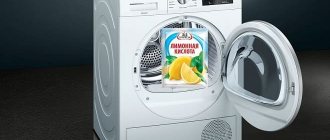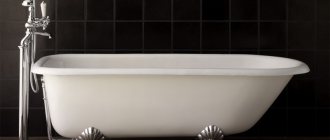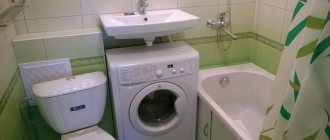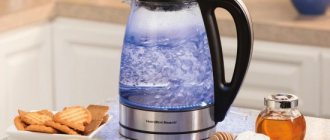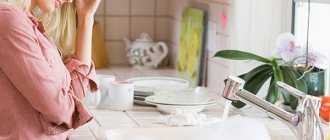It is human nature to become attached to everything that is established: habits, things, a car and... a bath. Don't be surprised - a good old cast iron bathtub. However, the new is slowly but steadily making its way. So, and with fonts, where the tension from the bustle of the city is relieved. Acrylic is replacing cast iron.
And here an unpleasant surprise awaits many. No one changed the water or the plumbing. But it is either hard, and then limescale deposits on the walls, or with iron - unpleasant rusty stains appear on the bottom, or even with chlorine - instead of shining whiteness, a dull yellow color appears. Attempts to correct the situation using the usual methods make it even worse - the inner surface of the bowl becomes dull, covered in scratches, and in some cases completely destroyed.
This happens because the owners do not know the basic rules for using acrylic bathtubs and how to care for them. Therefore, the editors of the StroyGuru website have set themselves the task of giving practical advice to their visitors on how to clean an acrylic bathtub at home. Types of equipment and cleaning products, folk methods of combating pollution, methods for restoring mechanical damage to the acrylic layer, and the nuances of operation will be considered.
What is acrylic
Victory over the enemy is achieved not only by fortitude, but also by knowledge of his strengths and weaknesses. This expression fully applies to the care of acrylic bathtubs. Without knowing the characteristics of the material and its weaknesses, it is impossible to understand what means can and should be used to clean a bathtub made of such an unusual material as acrylic. The term “acrylic” hides a range of completely different polymer materials made from methacrylic and acrylic acid: fabrics, glass, plastic.
Bathtubs are made from plastic. Acrylic bathtub has a smooth, shiny surface that is pleasant to contact. The material retains heat perfectly, is technologically advanced (you can get the shape of a bowl of the most bizarre shape), and durable.
At the same time, strength is not synonymous with the word hardness - the surface of the bathtub can be easily scratched, and with a concentrated impact it can be pierced through (a glass perfume bottle falling from a shelf is enough).
The material is afraid of hot water (above 85oC the plastic softens, deforming the walls of the bowl) and household chemicals containing:
- all types of chlorine - the surface, firstly, loses its shine and turns yellow, and secondly, it slowly deteriorates (pores are formed, shortening its service life);
- acetone - corrodes plastic, the first sign of which is its cloudiness. 10 ml of acetone is enough to make a dent;
- ammonia (almost all types of bleaches) - destroys the molecular structure of the material;
- formaldehyde in its composition is incompatible with all types of acrylates;
- alcohols, alkalis, acids melt acrylates.
Therefore, it is important to take into account all the above nuances of caring for an acrylic bathtub so that it serves for a long time, delighting its owners. Let's talk about the features of care in detail.
Disinfection with chlorine
There is another method to clean the surface. However, you should be extremely careful with it. Because high consistency may damage the surface.
To disinfect with chlorine, use the instructions:
- Fill the bath with water.
- Add chlorine to it. The solution should be 7%. Watch the consistency carefully.
- Wait a few minutes. Then open the drain.
- Rinse the surface thoroughly and wipe it dry.
It is strictly forbidden to wipe an acrylic bathtub with a pure chlorine solution. Not only will it damage the surface, but it will also leave behind yellow, disgusting stains.
Caring for acrylic bathtubs is not particularly difficult. The main thing is to carry out all procedures regularly and use only those products that will not damage the surface.
Bathroom care equipment
To wash dishes or a cast-iron bathtub, the entire range of equipment is used, starting with a foam sponge and ending with a metal sponge. The low-hardness acrylic surface of the hot tub can be scratched even by a toothbrush with medium-hard bristles. Therefore, there is a categorical prohibition (taboo) for caring for plastic hot tubs:
- on metal brushes and with hard bristles;
- metal scrapers and scourers;
- sponges with abrasive applied to one side;
- melamine sponges (surprising but true).
You can clean an acrylic bathtub using:
- sponges made of foam rubber, cellulose;
- fabric napkins;
- rags with soft pile (flannel, microfiber) - this is what the manufacturers advise. In principle, any non-abrasive fabric will do.
How to clean an acrylic bathtub
To care for acrylic bathtubs, you can use household chemicals, which are sold in a fairly large assortment in all retail outlets, from specialized stores to hypermarkets, or folk remedies that are not inferior in effectiveness to chemicals.
Household chemicals
When buying a product for an acrylic bathtub in a retail chain, you need to follow a few simple rules.
1. The product must, firstly, be suitable for acrylic, and secondly, for the type of contamination that has formed.
2. Detergent must be purchased in the form of a liquid, spray, cream, paste or gel (no powders). In this case, it is necessary to take into account some features of the release form:
- the solution is cheap, removes dirt perfectly, but also runs out very quickly. Therefore, when purchasing, you should calculate what is more profitable financially;
- Due to its thick consistency, the gel is more economical to use: it is easy to apply and distribute, but it also costs an order of magnitude more;
- The spray is easy to apply even in hard-to-reach places, is used economically, and can easily cope with heavily soiled areas. Prices are mainly related to quality;
- pastes and creams. They cost more and do a worse job of removing old stains. Otherwise, there are no complaints from consumers: they are easy to use and provide delicate cleaning.
3. Household chemicals should not contain: abrasives (paste is a sin), strong acids, caustic alkalis, chlorine, etc.
4. The pungent odor may cause allergic reactions. Recently, buyers have been paying special attention to this feature - products with a pleasant aroma are in demand.
5. Disinfectant additives are desirable in the detergent, which will eliminate the need for a special procedure for disinfecting the hot tub.
There are many ratings of detergents for acrylic bathtubs. They are all different - there are practically no repetitions. Therefore, the editors of the StroyGuru.Com website decided to compile their list of the most effective household chemicals for cleaning acrylic. And this is what happened:
"Akrilan" is a universal foam detergent. Sold in white 400 ml bottles. It removes lime deposits and rust well. Gives the surface shine, protects against bacteria (has disinfecting properties).
Method of use:
- sprayed onto a contaminated surface (it begins to foam on acrylic);
- after 1-2 minutes it is washed off (the manufacturer warns that the foam should not be allowed to dry);
- The bathtub is wiped with a dry cloth.
Flaws:
- high cost - more than 300 rubles. per bottle;
- wasteful consumption;
- is not able to remove mold embedded in the sealant.
“Cif” is a cleaning product well known to most Russians for the care of kitchen utensils. In the diverse line of creams and sprays, a preparation has also appeared for cleaning acrylic bathtubs.
The product has many advantages:
- economical consumption;
- nice smell;
- affordable price;
- excellent cleaning properties against all types of dirt, but only fresh ones.
Among the disadvantages:
- It doesn’t wash off well - you need to go over the entire bowl at least 3 times until all the foam is gone;
- does not pick up heavy dirt such as limescale and mold.
"UNICUM". Available in spray form to combat lime, rust and mold. According to reviews on the forums, this is one of the best tools:
- economical to use;
- fast-acting - 15-20 seconds is enough. and can be washed off;
- has disinfecting properties;
- with a low price - a bottle can be bought for about 170 rubles;
- copes well with old stains, but for this you need to wash it off a little later;
- After treatment the surface gives it shine.
Disadvantages, if any, were not cited.
“Mr. Cleaner” is literally a universal remedy: it removes not only possible types of contamination from the bowl, but also washes everything that is in the bathroom (ceramics, metal parts of plumbing equipment, etc.).
Has antiseptic properties. Creates a polymer film on the surface that protects plumbing fixtures from contamination. Action time is about 10 minutes.
The weaknesses of the product include:
- the presence of a chemical smell, which, however, quickly evaporates;
- poor ability to wash away stubborn stains and rust.
A bottle with a capacity of 500 ml can be bought for 150-165 rubles.
“Cinderella” is an inexpensive (RUB 30-60) cleaning agent that effectively cleans acrylic surfaces of all types of contaminants. Unfortunately, the name matches the essence due to the pungent smell - it is very difficult to work without a special mask.
There are no comments regarding other detergent evaluation criteria.
In addition, on the positive side the following are mentioned:
- “Maline” – designed to remove lime and soap deposits;
- “Gloss” () - created on the basis of citric acid, effectively fights limescale, rust and soap stains;
- “Tim-Profi (production) is a professional product for disinfecting and washing acrylic bathtubs from any old contaminants;
- “Meine liebe” - an eco-friendly product (quickly decomposes) to remove white deposits;
- "Mr. Muscle" and others.
Folk remedies
You can also clean the bath well using folk remedies.
Baby soap. Bathing the baby should be carried out in a sterilely clean bath, without any residues of detergents with aggressive components on the walls of the bath. Therefore, immediately before the water procedure for the baby, the bath should be additionally washed with baby soap.
Laundry soap. For daily cleaning, laundry soap copes well with all types of dirt. To do this, it is grated, diluted with water and stirred to a gel state. Add 1-2 tablespoons of baking soda to the resulting consistency and mix everything again until the sodium crystals are completely dissolved. This is true for all recommendations.
However, this order of work does not suit all housewives - it is long and painstaking. Therefore, they first quench the soda with a small amount of hot water, then add a little cold water and stir until the solids are completely dissolved. The resulting mixture is poured into grated soap and stirred until a thick, homogeneous slurry is formed. The surface of the font is wiped with the resulting composition, after which it is immediately rinsed. If the bathtub has already turned yellow, the applied composition is left on the acrylic for 15-60 minutes - during this time the soap has time to dissolve the resulting yellowness.
However, this product does little to help with stubborn rust and lime.
Liquid soap. For regular acrylic care, the most common option is liquid soap. You can also use washing gel or liquid dishwashing detergent. The main thing is that they do not contain components that corrode acrylic.
Cleaning is carried out as standard: the entire surface of the bowl is wiped with a sponge and detergent applied. After wiping, the bowl is washed with warm water and then wiped with a dry cloth.
Vinegar. Table vinegar, on the one hand, fights limescale better than any home remedy, but on the other hand, it can severely damage acrylic plumbing fixtures. Therefore, there are two cleaning options: quickly, with undiluted vinegar (heavily moisten a rag in vinegar, apply it to the dirty area and constantly pour warm water on it) or for a long time, but with a composition with a low concentration of cleaning agent - 1 liter of 9% vinegar is poured into a filled bathtub and left in it for 10-12 hours.
Citric acid (lemon juice). A solution of citric acid (lemon juice) perfectly removes limescale, rust, and dissolves fats. Therefore, with regular care, the product is one of the best. The cleaning itself does not require much time:
- 50 g of “lemon” (enough for weekly care) is dissolved in a small amount of warm water and poured into a filled bath;
- the water is mixed and then left for 10-12 hours;
- after a certain time, the solution is drained, the plumbing fixtures are washed, wiped with a dry cloth, and then polished with felt.
Soda. There are two types of soda: baking soda and soda ash. To care for the plastic hot tub, only the food version is used. There is an ambiguous attitude towards its use: some are categorically against it, which they write about on various forums on the Internet, others are in favor, citing their own experience.
In this dispute, those who correctly use the ability of sodium to break down fats and other organic compounds are most likely right. After all, you can’t wipe acrylic plastic with soda. Only apply the paste to contaminated areas or use a composition where solid particles are completely dissolved.
Here is one cleaning method:
- pour 2-3 tablespoons of soda into a deep plate;
- 200 ml (glass) of warm water is poured there;
- soak a rag with the resulting mixture, capturing undissolved soda;
- moisten the contaminated area with a damp cloth (just do not rub);
- After 15 minutes, the stain is washed and then wiped off.
Mustard. Mustard powder is used only in combination with baking soda. Used to treat yellow and rusty areas.
Hydrogen peroxide. Used together with vinegar, enhancing the cleaning effect. It is diluted in a ratio of 3:1, where 3 parts are vinegar, 1 part is peroxide.
Toothpaste. The best solution for cleaning acrylic is toothpaste. Moreover, not only among folk methods, but also among household chemicals. This phenomenon is explained simply: acrylic came to plumbing from dentistry.
But the effectiveness of the cleaning product depends on the cost of care. Therefore, the paste is used in exceptional cases, for example, for cleaning a painted surface with hair dye, gouache, and other dyes.
The method of use is simple: rub the paste into the painted area with your fingers, a rag or sponge. After a few minutes, the bathtub is washed and dried.
Attention: recently many types of pastes with abrasives have appeared for cleaning stones on tooth enamel. This paste should absolutely not be used. Since in most cases the manufacturer does not indicate the presence of abrasive particles on the packaging and tube, you can find out on your own by rubbing a little paste between your fingers. Hard particles will be immediately detected.
How to restore the whiteness of a surface using home methods?
Over time, the bathtub becomes dull. She becomes not as radiant as before. There are good home methods to help restore whiteness.
How to clean an acrylic bathtub at home? You can whiten the surface with citric acid, baby soap or toothpaste.
How to whiten an acrylic bathtub at home:
- Wash it with high pressure water. Small dust particles will be removed.
- Treat the surface of the plumbing with a solution of citric acid (1 tablespoon per 1 liter of water, applied from a spray bottle), baby soap (crushed, dissolved in water, whipped into foam and processed), white toothpaste (applied with the soft side of a kitchen sponge).
- Leave them for 30–60 minutes. During this time, deeply ingrained dirt will disappear and the surface will become whiter.
- Remove any remaining product with a cloth and warm water.
Home methods are not as effective as professional formulations. Several applications are needed to achieve the desired result.
Do I need to disinfect the bathtub and with what?
Enlightened site visitors may have a logical question: why talk about disinfecting plastic bathtubs if fungal growth is impossible on acrylic. This is true. But we must not forget about 2 things:
- The bathtub is simply rinsed after each use (only cleanliness fanatics wash), and cleaned when free time appears. The fungus reproduces well on plaque on the walls of the bowl (fats and various organic substances are an excellent nutrient medium). Therefore, if for some reason it was not possible to thoroughly wash the font for a long period (about a month), it is advisable to completely disinfect it;
- The fungus reproduces well on silicone sealant, which is used to seal the joints between the sides of the bowl and the walls or tiles.
To protect family and friends from contact with harmful bacteria, you need to regularly carry out disinfection measures. There are several ways to do this.
Method No. 1. Buy Domestos, but only without chlorine, Acrylight, Santekh or Acrylon. To make sure that the purchased gel (paste) is suitable for an acrylic bath, you need to conduct a small experiment on a small, inconspicuous area, because Not all disinfectant containers have a warning label about the presence or absence of chlorine. If no changes are observed, then you can begin sanitation:
- the surface to be treated is rinsed with warm water, including the sealant;
- the gel is applied to a cloth or sponge;
- the entire surface of the bowl and the sealant are wiped. At the same time, you cannot leave a visible layer of the substance - a concentrated gel even without chlorine can provoke the formation of difficult to remove stains;
- after 1-2 minutes, the applied product is washed off with hot (about 60oC) water;
- The bathroom is wiped dry. If this is not done, limescale will actively form in poorly washed areas.
Method No. 2. The bath is completely filled with warm water (20-25oC). Two 1 liter bottles of “Belizna” with a bleaching agent concentration of no more than 7% are poured into it.
This solution is left in the bowl for 10-15 minutes, after which it goes down into the drain hole. Water is poured into the bath again. Use a sponge or rag to wipe the walls and bottom of the bowl. The water drains again. The bath is rinsed with warm water and then wiped dry. The disadvantage of this method is the need for additional processing of the sealant.
Attention: if there is a baby under one year old in the house, disinfection is carried out at least once a week. After its completion, the walls are washed with baby soap.
Method number 3. You can use a steam cleaner - hot steam not only kills germs, but also removes dirt, restoring the shine to the surface. It is advisable to carry out this type of treatment once every six months. The only requirement: you can’t stay in one place for a long time. The surface can be melted.
Disinfection of an acrylic bathtub
One of the properties of acrylic is the almost complete absence of the risk of mold and mildew. But disinfection is a way to protect against bacteria, so it is required from time to time. You must use products specifically designed for acrylic. In accordance with the instructions, add the product to a bath of water and leave for the specified time (usually 10 minutes). After using the disinfectant, wash the bath thoroughly.
Important! You can also disinfect your bathtub with vinegar. Mix it with water (1:1), treat the surface, and rinse off after 1 hour.
Recommendations for cleaning depending on the type of contamination
There may be various types of contaminants on the surface of the bowl. Each of them has its own detergents. For clarity, let’s summarize the problems that arise and how to solve them in a table.
Table 1. Types of contaminants and detergents to remove them.
| Type of pollution | Cleaning products |
| Yellowness | Toothpaste; hydrogen peroxide and vinegar; dry mustard (powder) and baking soda |
| White coating (lime) | Table vinegar (9%); baking soda; lemon acid |
| Rust | Lemon juice; Ammonia and hydrogen peroxide |
| Silicone sealant | Lemon acid; White Spirit; vinegar essence |
| Glue | Lemon acid |
Now let’s look in more detail at how to clean an acrylic bathtub from each type of contaminant.
Yellowness
A bathtub can turn yellow for several reasons: there is a lot of iron in the water; insufficient quality of cleaning was carried out at the disinfection station to remove chlorine impurities; irregular care was provided, etc. Therefore, it is first advisable to figure out why it turns yellow in order to use a cleaning agent that can solve the problem. If this is not possible, then you need to try using the recipes below one by one.
Recipe No. 1. Take hydrogen peroxide and table vinegar (9%) and mix in a ratio of 1:3. The resulting solution is poured into a spray bottle and sprayed onto the stain. If you don’t have a sprayer, you can apply the product to the yellowness with a sponge or soft cloth. After a quarter of an hour (15 minutes), the stain is thoroughly washed and then wiped dry.
Recipe No. 2. Mustard powder is mixed in equal proportions with baking soda and diluted with warm water to a paste. Apply to yellowed areas for 30 minutes, then wash off with warm water. The bowl is dried with a hairdryer or wiped with a dry cloth.
Recipe No. 3. The most effective, but at the same time the most expensive of the folk methods to remove yellowness and return the shine to the bath - toothpaste. She:
- perfectly removes yellowness, regardless of the source of formation;
- having a soft structure, it eliminates the risk of scratches during the cleaning process, compared to soda;
- does not contain aggressive substances, unlike vinegar and citric acid.
There are two methods for cleaning with paste.
Method 1. With this cleaning method, the paste is applied locally, only to damaged areas:
- toothpaste is applied in a thin layer to yellowed spots;
- after 5 minutes, the areas are wiped with a sponge;
- The cleaning agent is washed off with warm water, after which the font is wiped dry.
Method 2. If it is necessary to treat the entire surface, paste is applied to the sponge. After this, one zone is processed, for which the applied cleaning agent is enough. Having completed work with one portion of paste, the bath is washed with warm water, after which the procedure is repeated with a new area. And so on until the entire surface of the bowl is cleaned. At the end of the work, the font should be wiped with a dry cloth.
Limescale
You can remove limescale with a 9% solution of table vinegar. Considering that vinegar behaves aggressively towards acrylic, you need to pour it into a bathtub filled with warm water in a volume of no more than 1 liter and stir well. In this state, the bath is left for about 10-12 hours, no more. Otherwise, unwanted chemical reactions will begin. After the set time has passed, the water is drained, the bowl is rinsed first with warm and then cold water and wiped dry.
Many housewives add citric acid, soda or salt to the water along with vinegar. Such additives not only speed up the process of eliminating limescale, but also restore acrylic to its original shine. The only requirement: the crystals of the added substances must be completely dissolved in water.
Baking soda can also remove deposited limescale. But when using it, you need to remember that it is a good abrasive - it’s not for nothing that housewives use it to scrub the dirtiest kitchen utensils. Therefore, you need to handle it very carefully: either pour water into the bath, pour a pack of product into it, leave for 1 hour, drain the solution, rinse and wipe dry, or use it as a paste. But the latter option is only suitable for removing individual stains, which is rare.
The technology for getting rid of limescale with gruel is simple:
- soda diluted to the consistency of sour cream is applied to contaminated areas for 20-25 minutes;
- After the specified time, it is washed off with water, after which the bowl is wiped with a dry cloth.
You can also wash the font with citric acid. The method of application is similar to vinegar. To clean, you need 200 g of dry substance, completely dissolved in warm water - crystals that settle on the walls or bottom of the bath immediately react with acrylic.
Rust
Rust stains can be removed with lemon juice or a solution of ammonia and hydrogen peroxide.
Lemon juice. Freshly squeezed lemon juice is applied to the rust stain for an hour, no more. After this, the bath is washed and dried. To enhance the effect, many housewives grind table salt to a powder and mix it with lemon juice.
The gruel is applied to contaminated areas. After about an hour, everything is washed off with warm water, and the surface of the plumbing is wiped. Under no circumstances should you rub anything here - the shine will go away. If it was not possible to remove the rusty coating the first time, repeat the procedure.
Ammonia and hydrogen peroxide. Both substances are aggressive towards all types of acrylates. Therefore, their impact should be short - 5-7 minutes. But this time is enough to deal with fresh rust. For advanced cases, you will have to buy specialized products or use lemon juice.
Directions for use: ammonia and hydrogen peroxide are mixed in equal proportions. A little warm water is added to the resulting solution, after which the resulting product is applied to the browned areas using a tampon or sponge. After a maximum of 10 minutes, the solution should be washed off and the surface wiped.
Silicone sealant
Silicone sealant causes a lot of concern: no matter how you wash it, it turns black and becomes covered in mold. The problem can only be resolved in one way: replacing the silicone. But here another problem arises: the sealant is tightly glued to the acrylic.
In this case, a cloth soaked in one of the substances given in the table will help (citric acid must be dissolved). With their help, the silicone is rubbed off, gradually dissolving. Mandatory condition: every 7-10 minutes, the treated areas are washed with warm water.
Glue
You can remove glue residue from the surface of an acrylic bath using dissolved citric acid.
Important: The following recipes are designed for cleaning old stains. For regular care, other methods and concentrations of the substance are used, as described in the section “How to wash an acrylic bathtub.”
How to clean an acrylic bathtub at home?
Folk remedies for cleaning the bathroom are affordable and safe. To clean your bathtub at home, you can use baking soda, citric acid, etc.
Detergents
To remove various types of contaminants from the surface of acrylic products, it is not necessary to use detergents. Cleaning acrylic bathtubs at home is not difficult. To remove yellow plaque, you can use the following means:
- Mix hydrogen peroxide and ammonia in equal proportions. Apply the solution to a soft cloth and rub the coating with it.
- Mix vinegar and lemon juice 1:1, apply to a sponge and treat the surface.
- Dilute the bleach powder with water to a paste and apply to the stain. Leave the product until completely dry, then rinse and wipe the coating dry.
Citric acid solution
To clean the coating, fill the bath with warm water and add 10 g of citric acid to it. The water should be left for at least 2 hours (maximum 12). After this time, it is necessary to drain the water, wash the coating and wipe it with a napkin.
Apple vinegar
It is an effective stain and plaque remover, but you must be careful and act quickly with it as it is highly acidic and has a low pH. If there are scratches on the surface, then you should avoid using apple cider vinegar.
It is necessary to moisten a soft cloth in the solution and apply it to the problem area, directing a stream of water there. After this, the surface should be washed with warm water.
Soda
You can use baking soda to remove corrosion and plaque. The product is soaked to a paste and applied to the coating. After 2-3 minutes, wash off with warm water.
Toothpaste
Stains of various origins can be removed with toothpaste applied to a sponge. You should rub the stain with it, slightly pressing the sponge on its surface.
The nuances of cleaning a whirlpool bath
Nuances of cleaning a hydromassage bath Daily cleaning of a hydromassage bowl is carried out in the same way as a regular font. However, uninterrupted operation of nozzles, aero- and hydraulic systems is impossible without regular (at least once a month, and with regular use - once a week) maintenance of the entire set of plumbing equipment. In this case, a comprehensive cleaning of the plumbing is required.
Let's take a closer look at how to clean an acrylic whirlpool bathtub:
- the tank is filled with water at a temperature of +25-30oC;
- A special detergent is poured into the bath (the amount is indicated on the packaging or in the instructions for use). However, you can use a long-proven folk method: 2 packets of citric acid, 50 g each, are dissolved in 200 ml of warm water (you can add 100 g of concentrated lemon juice) and poured into the poured water. Everything is thoroughly mixed by hand. There is no difference between juice and acid in terms of impact on pollution. Therefore, you need to look at the cost of cleaning and buy what is cheaper;
- the aero- and hydraulic system starts up for a few minutes (5-7) at full power. Some bathtub models provide for the supply of only water - it must move through the pipes without air bubbles;
- after stopping the pumps, the bath is left alone for 2-3 hours;
- After the specified time has passed, the drain hole opens to drain the water. Here you should not be surprised if dirt comes out - it means the pipes have been washed well;
- Use cotton swabs pre-moistened in hydrogen peroxide to wipe the nozzle channels that supply water. Thus, additional cleaning of the nozzles from lime deposits is carried out;
- refill the bowl with water above the nozzles, but this time with cold water. All existing hydromassage systems are started again for 4-5 minutes, after which the water is drained again;
- The bathtub is rinsed with warm water and then wiped dry with a napkin or soft cloth.
If everything is done according to the instructions and in a timely manner (more than once every six months), the surface of the bowl will shine like new.
Checking the tool
If you don’t have the necessary liquid at hand, you can use another one. However, how to choose the right one that will clean perfectly and will not harm the surface?
First, be sure to study the composition of the substance. The product should not contain aggressive components.
Next, to determine how to clean an acrylic bathtub at home, it is recommended to resort to a little trick. Apply your chosen liquid to a small area. Choose an inconspicuous area. For example, from the side. It is best to apply the product to the bottom of the bathtub. Leave for 20-30 minutes. After this, rinse the area. Carefully examine how the bathtub reacted to this cleaning product.
If no defects were found, then the liquid is completely suitable and you can begin the washing procedure.
How not to clean an acrylic bathtub
As the old Latin proverb says: repetition is the mother of learning. Therefore, we will repeat it once again so that you remember what you should not use to clean an acrylic bathtub.
1. Acrylic bathtub has good strength without hardness. Therefore, it can be easily scratched by all types of metal accessories designed for caring for household items and things: brush, scraper and washcloth.
Also, avoid using hard-bristled brushes (all of them, to be honest), melamine sponges, and abrasive sponges. Special cleaning products in the form of powders (Pemolux, Comet, Biolan, etc.), which also leave traces, are prohibited.
Attention: washing powder can only be used after complete dissolution in warm water - its undissolved particles leave scratches.
2. Acrylic plastic is very sensitive to many chemicals found in household chemicals and cosmetics. In this regard, detergents in the form of gels, sprays and emulsions containing chlorine, acetone, formaldehyde, ammonia, alcohols, alkalis and acids are also prohibited.
Exceptions from this list are allowed if the concentration of ammonia, alcohols, alkalis and acids is very low. For example, if you wet a sponge or rag with detergent and wipe the surface of the bowl, you will be in trouble. If you pour a little detergent into a bathtub filled with water, there will be no negative consequences. Therefore, the use of such detergents as Sarma, SanClin, Luxus professional, LOC Plus, Cillit, Acryl - Net, Star - Acrylat, Triton, RAVA K and Panni for cleaning the hot tub is only at the risk of its owner.
What is the secret to cleaning acrylic bathtubs?
Many people who bought this bathtub for their home do not know about the rules for caring for it. It is necessary to remember that acrylic requires more careful care, because if you choose the wrong cleaning product, you can damage the surface of the bathtub, as I already said.
Caution and accuracy are the main rules when washing acrylic surfaces. For these purposes, it is undesirable to use abrasive and powdery products, as well as various pastes that contain chlorine, acids, alkalis and ammonia: these substances can cause scratches and also lead to the loss of the original color of acrylic.
Folk remedies
To clean the surface, it is allowed to use liquid substances that do not contain aggressive components. This will allow you to clean your plumbing quickly and easily.
There are also specially designed products for these surfaces. So, how to clean an acrylic bathtub at home?
Let's consider the most popular means:
- "Acrilan". The substance acts on the surface very quickly and is quite effective. It removes mold, rust, soap residue, and plaque. Does not leave behind microdamages or scratches. After using this product, the bath is covered with a light protective film.
- "Ravac." These are products that are used to remove grease, stains, rust, and scale. They perfectly disinfect surfaces.
- "Acrylic Polish". An effective product designed for acrylic surfaces. It is characterized by low cost.
- "Tim-Pro." A modern product that does not contain abrasive ingredients. It allows you to achieve crystal purity and does not leave scratches.
- "Mr. Cheester." A fairly cheap solution that can effectively remove rust and plaque. In addition, this product has an antifungal and antibacterial effect.
How to remove minor scratches and damage
During the operation of an acrylic bathtub, small scratches and cracks may appear, which methodically destroy a thin layer of polymer. They definitely need to be removed. This is a big topic, so in this paper we will tell you how to remove scratches caused by using detergents.
For this you will need:
- polish (epoxy resin) or liquid acrylic;
- sandpaper of 2 types: P60 and P240;
- white spirit or acetone;
- putty knife;
- plastic film if liquid acrylic is used;
- paper napkin (piece of rag);
- felt.
Repairs are performed in the following sequence:
- the damaged surface is treated first with medium-grained (P60) and then with fine-grained sandpaper until a matte surface appears;
- the treated area is degreased using acetone (white spirit) and a napkin;
- polish is applied to the scratch with a spatula;
- After 24 hours, the applied composition is polished with felt.
If liquid acrylic is used, it is covered with plastic film for several days, after which it is sanded with fine-grained paper. The process is completed by applying polish and polishing the repaired area with felt.
Attention: if the color of the stain is different (it was not possible to match), then before applying the polish with an airbrush, a color correction of the repaired scratch is carried out.
Recommendations for pollution prevention
To ensure that the surface always shines and the bathtub lasts as long as possible, you need to make it a rule to follow simple recommendations.
- After taking water procedures, the font must be rinsed with warm water and then wiped dry - the bowl must always be dry.
- Cleaning with detergents should be carried out on a regular basis, 1-2 times a month.
- Use cleaning products strictly according to instructions. After all, the most harmless chemicals can enter into unwanted reactions if they are not washed off in a timely manner. This may result in spots and discolored areas.
- When purchasing new types of detergents, their effect on acrylic is checked in an inconspicuous area of the bathtub.
- We need constant monitoring of the condition of faucets, shower hoses and taps with cold and hot water. Any, even the slightest leak leaves traces that are difficult to remove: rust or limescale.
- After taking a bath, the taps must be carefully closed so that drops do not fall on the acrylic surface.
- It is advisable to install an additional filter on the tap to purify the water.
- Once a month you need to wipe the acrylic with wax or wax-based polish. This operation not only restores shine, but also protects the bath from contamination - the wax film has a dirt-repellent effect.
- Acrylic plastic scratches easily. Therefore, cleaning the bowl is done with soft sponges or cloths.
- Use acrylic-compatible detergents to clean bathroom fixtures. After all, one accidental drop of a plastic-aggressive chemical can lead to expensive repairs.
- If dyes get into the water, for example, hair dye, gouache from children's hands, etc., the water is immediately drained, and the walls and bottom are washed - then it will be much more difficult to clean out the dyes that have gotten into the pores of the polymer.
- It is not advisable to wash animals in the bath - scratches from the claws will remain. If necessary, the bottom, but not the walls, can be protected with a rubber mat or a large bath towel.
- When starting to clean the font, you need to take detergents for the existing types of contaminants.
- Do not soak or wash laundry in the bathroom - bleaches and detergents damage the surface, and colored items can stain acrylic.
- Do not place a stool, buckets or basins in the bathtub. When you collect water, traces will remain. If necessary, water is poured through the shower hose into containers placed on the floor next to the bathtub.
- Do not pour hot water, more than 80oC, and for sandwich structures, more than 70oC - the plastic will deform.
- Do not place curling irons or curling irons on the sides of the bathtub when curling your hair - melted spots will appear.
At first glance, there is a lot of advice. But they are all basic and do not require special knowledge or financial expenses. Thanks to them, it becomes possible to enjoy water procedures for a long time.
In conclusion, proper care of an acrylic bathtub extends its service life and allows you to take water procedures in a comfortable environment. The care methods are not very complicated. You can use household chemicals or folk remedies.
Getting rid of yellowness
Such defects are completely unusual for acrylic surfaces. Yellowness often occurs in bathtubs made from inexpensive plastic that has a protective layer.
Initially, it should be said that such stains appear from poor-quality water or a sudden change in the temperature of the liquid. It is to such situations that plastic reacts by forming stains. In addition, it is very important that acrylic is always dry. It is absolutely unacceptable for water to stagnate in the bathroom. Be sure to check the taps. They should not drip water onto the surface.
We should remind you once again how to wash an acrylic bathtub. At home, cleaning products specially designed for such coatings will perfectly get rid of yellowness. You can use the substance "Acrylan". An excellent liquid is Tim-Profi. This product effectively cleans even very neglected surfaces. In addition, it perfectly disinfects the bath.
Citric acid will perfectly remove yellowness. It is recommended to dissolve 1 sachet in 1 glass of water. Apply the resulting liquid to the acrylic surface. Then rinse it thoroughly. Your bath will become snow-white again.
